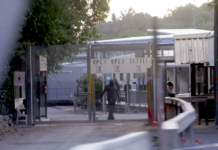
The Singapore cargo ship Dali chartered by Maersk, which collapsed the Baltimore bridge in the United States last month, was carrying 764 tonnes of hazardous materials to Sri Lanka, reports Colombo’s Daily Mirror.
The materials were mostly corrosives, flammables, miscellaneous hazardous materials, and Class-9 hazardous materials — including explosives and lithium-ion batteries — in 56 containers.
According to the Mirror, the US National Transportation Safety Board was still “analysing the ship’s manifest to determine what was onboard” in its other 4644 containers when the ship collided with Baltimore’s Francis Scott Key Bridge, collapsing it, on March 26.
The e-Con e-News (ee) news agency reports that prior to Baltimore, the Dali had called at New York and Norfolk, Virginia, which has the world’s largest naval base.
Colombo was to be its next scheduled call, going around South Africa’s Cape of Good Hope, taking 27 days.
According to ee, Denmark’s Maersk, transporter for the US Department of War, is integral to US military logistics, carrying up to 20 percent of the world’s merchandise trade annually on a fleet of about 600 vessels, including some of the world’s largest ships.
The US Department of Homeland Security has also now deemed the waters near the crash site as “unsafe for divers”.
13 damaged containers
An “unclassified memo” from the US Cybersecurity and Infrastructure Security Agency (CISA) said a US Coast Guard team was examining 13 damaged containers, “some with Centers for Disease Control and Prevention [CDC] and/or hazardous materials [HAZMAT] contents.
The team was also analysing the ship’s manifest to determine if any materials could “pose a health risk”.
CISA officials are also monitoring about 6.8 million litres of fuel inside the Dali for its “spill potential”.
Where exactly the toxic materials and fuel were destined for in Sri Lanka was not being reported.
Also, it is a rather long way for such Hazmat, let alone fuel, to be exported, “at least given all the media blather about ‘carbon footprint’, ‘green sustainability’ and so on”, said the Daily Mirror.
“We can expect only squeaky silence from the usual eco-freaks, who are heavily funded by the US and EU,” the newspaper commented.
“It also adds to the intrigue of how Sri Lanka was so easily blocked in 2022 from receiving more neighbourly fuel, which led to the present ‘regime change’ machinations.”













































